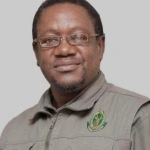Zambia will recall at least 100 Megawatts that it has been exporting, hoping to ease load shedding.
Information Minister Cornelius Mweetwa says Zambia is bound by contracts, but is seeking an exit from some of them.
Zambia is also importing 165MW to boost depressed local supply.
Apparently, Nicholas Bhero, Developmentalist, says addressing power challenges in Zimbabwe and the Southern African Development Community (SADC) region requires a multifaceted approach:
- Investment in Renewable Energy: Expanding renewable energy sources such as solar, wind, and hydropower can diversify the energy mix and reduce reliance on traditional fossil fuels. This approach can leverage Zimbabwe’s abundant solar resources and existing hydroelectric infrastructure.
Improving Energy Efficiency: Implementing energy-efficient technologies and practices across industries, households, and infrastructure can help reduce energy demand and minimize wastage.
Enhancing Regional Cooperation: Collaboration among SADC countries can facilitate the sharing of resources and expertise in energy generation, transmission, and distribution. Regional power pools and interconnections can improve energy security and resilience to supply disruptions.
Infrastructure Development: Upgrading and expanding power infrastructure, including transmission and distribution networks, is essential to improve reliability and access to electricity in both urban and rural areas.
Policy and Regulatory Reforms: Implementing transparent and stable energy policies, along with effective regulatory frameworks, can attract investment and promote private sector participation in the energy sector. This includes policies that support renewable energy deployment, promote energy access, and ensure fair market competition.
Capacity Building and Skills Development: Investing in education and training programs for energy professionals can build local expertise and strengthen the workforce needed to support the energy transition and manage the evolving energy landscape effectively.
Innovative Financing Mechanisms: Exploring innovative financing options such as public-private partnerships, green bonds, and international development assistance can mobilize the necessary capital for energy infrastructure projects while ensuring sustainability and affordability.
He says by adopting a holistic approach that combines these strategies, Zimbabwe and the broader SADC region can work towards a more sustainable, reliable, and inclusive energy future.
Zwnews











